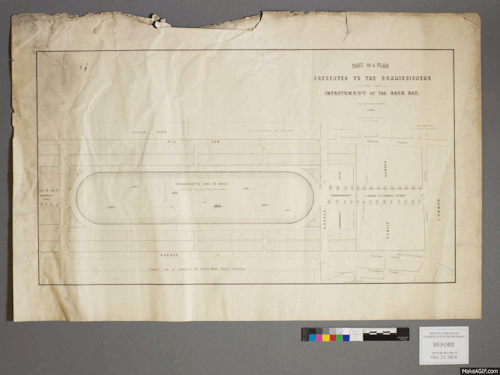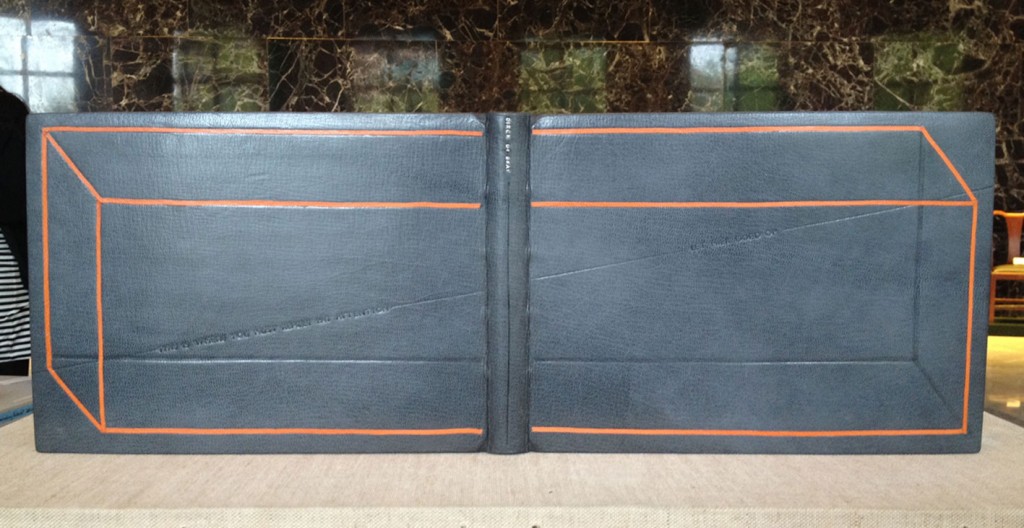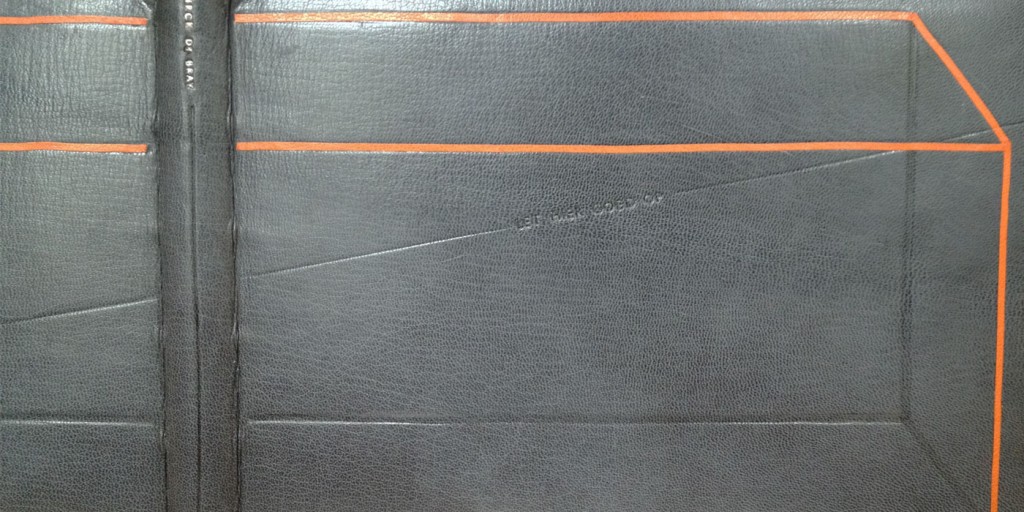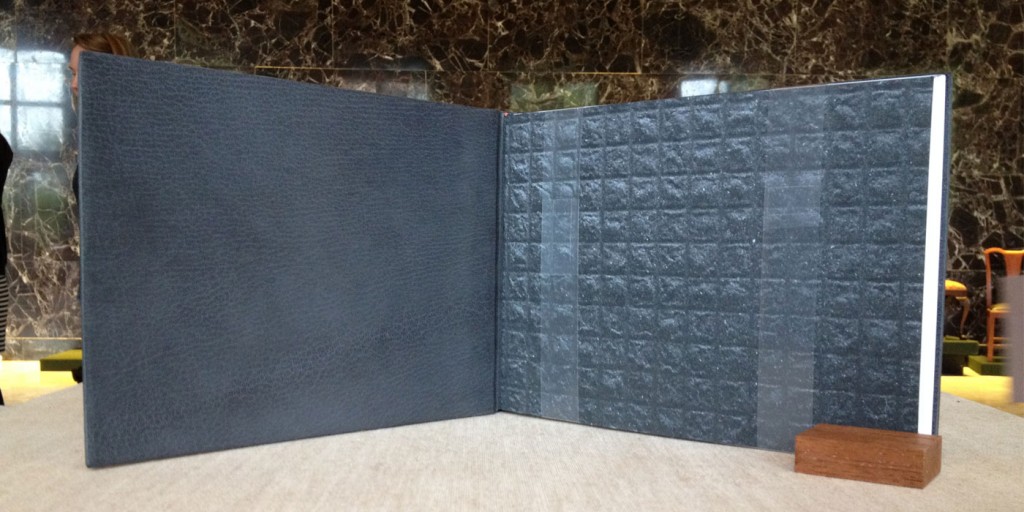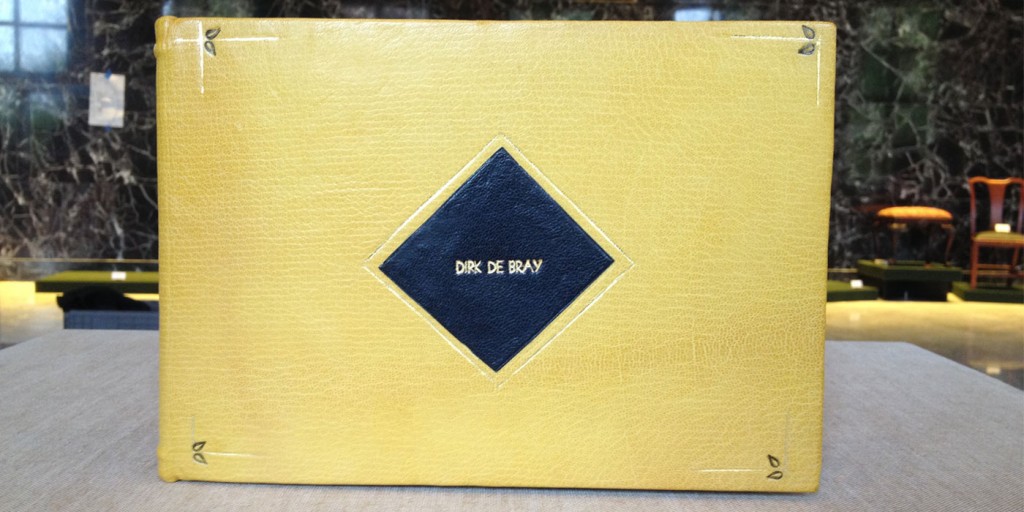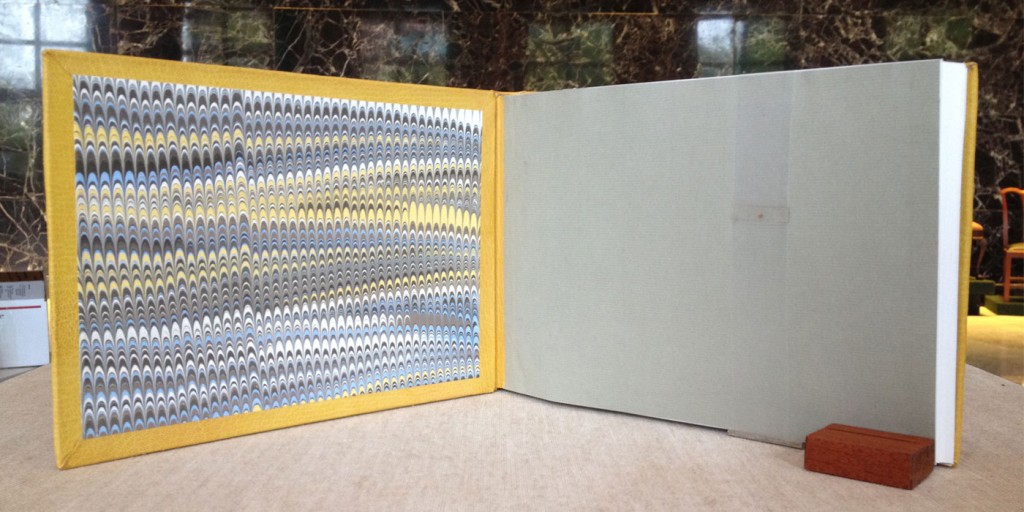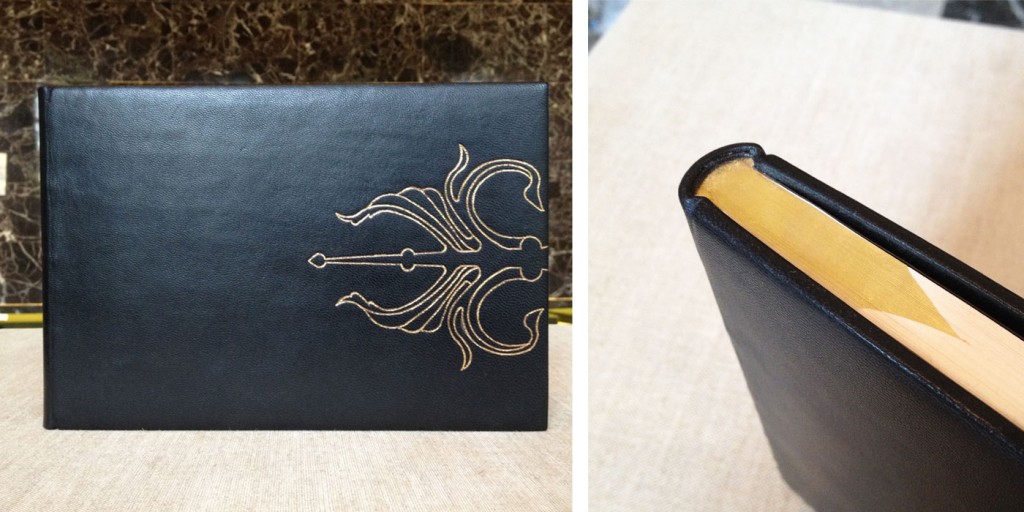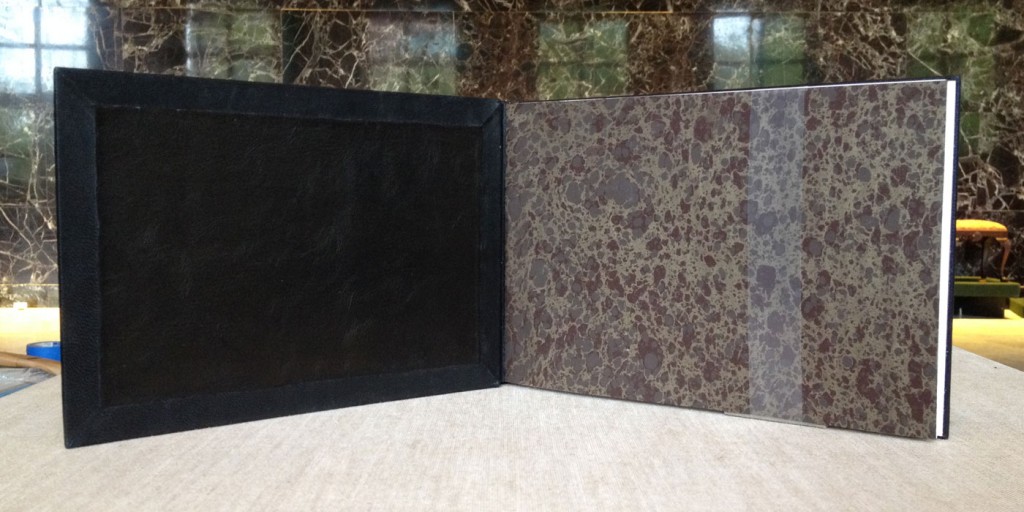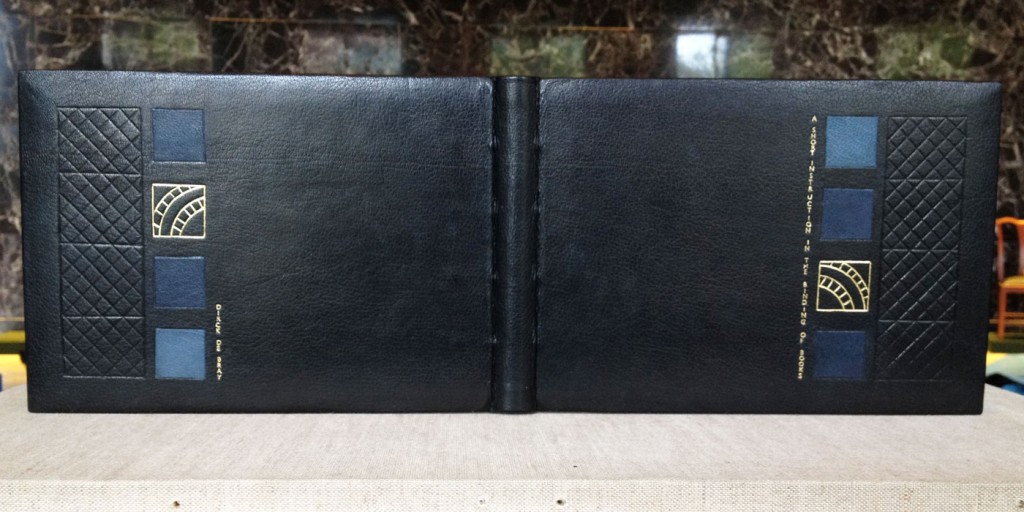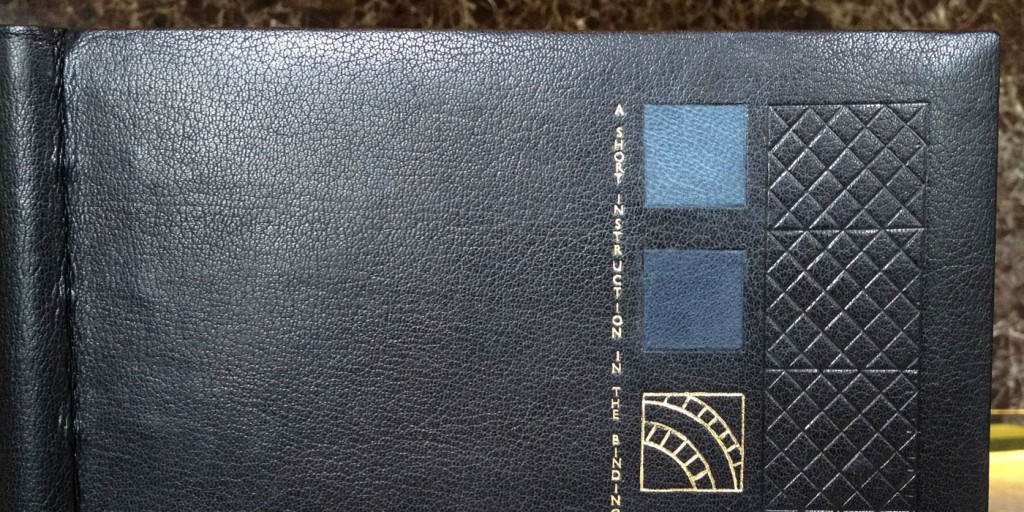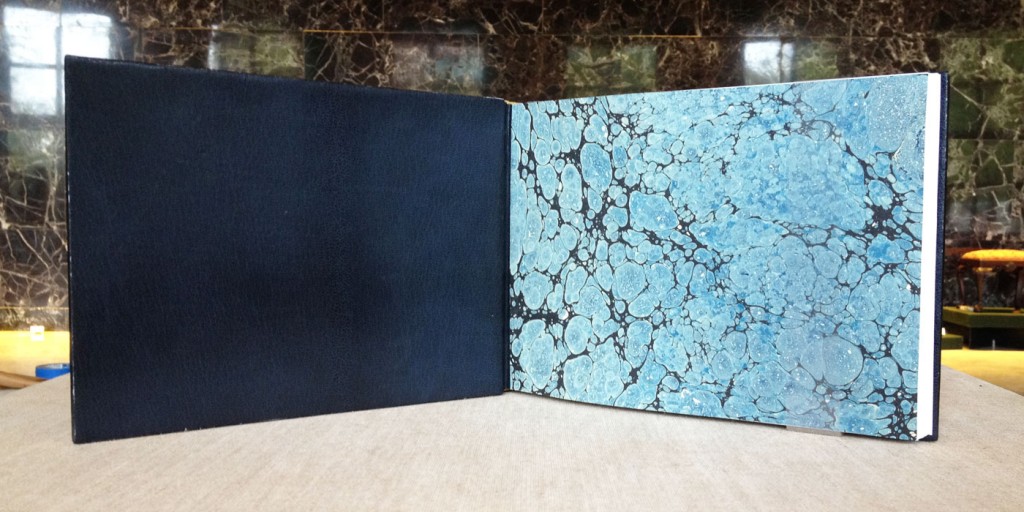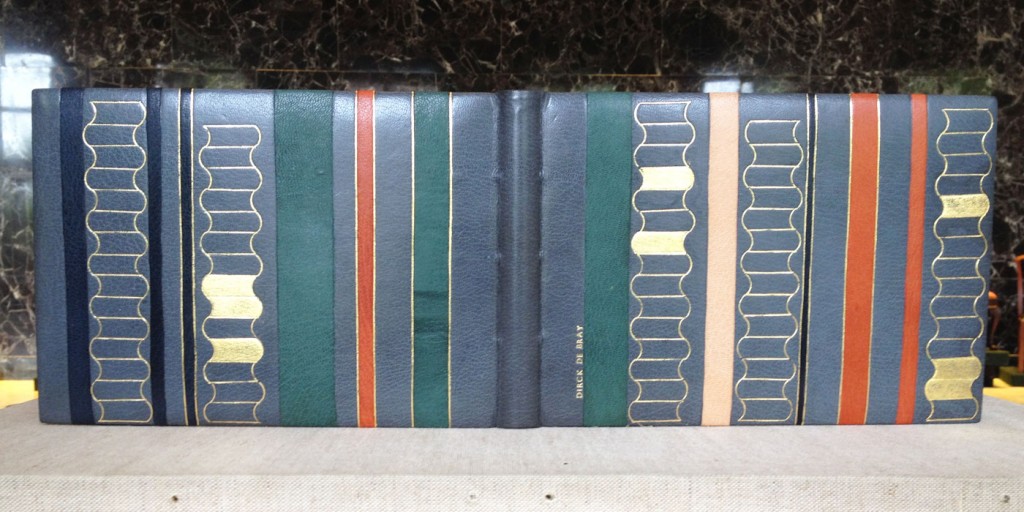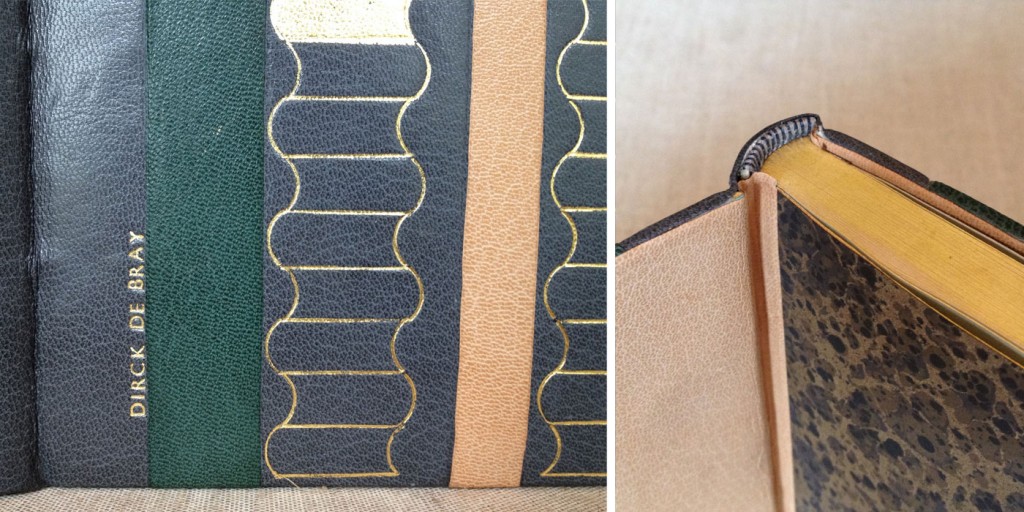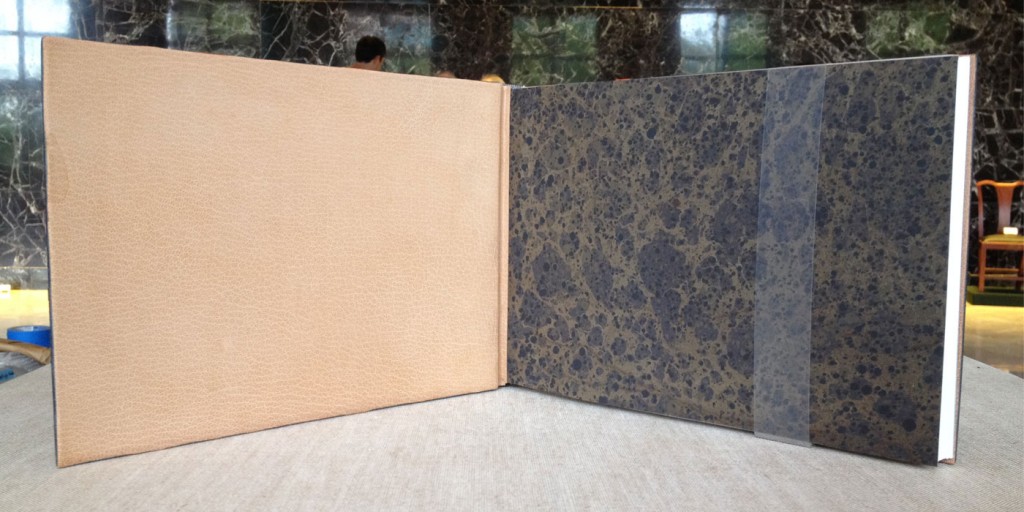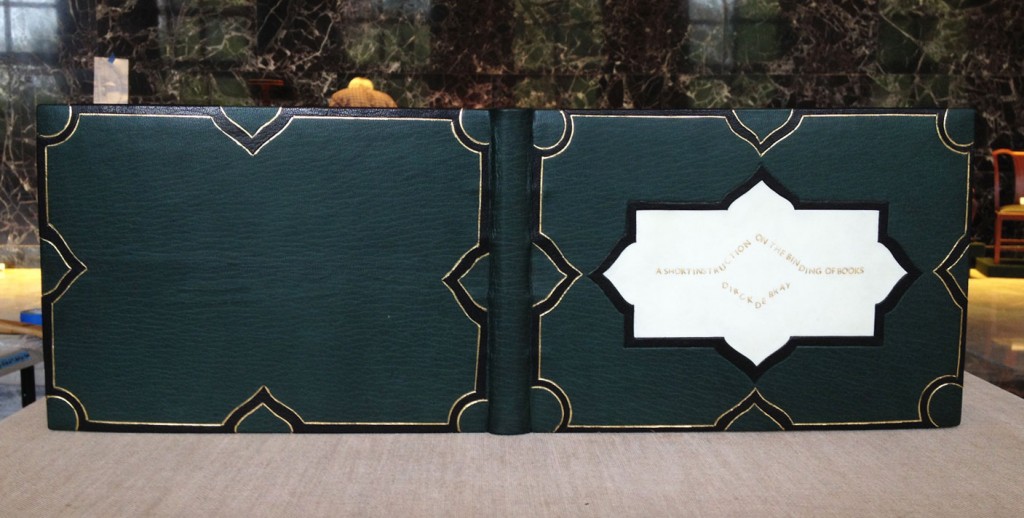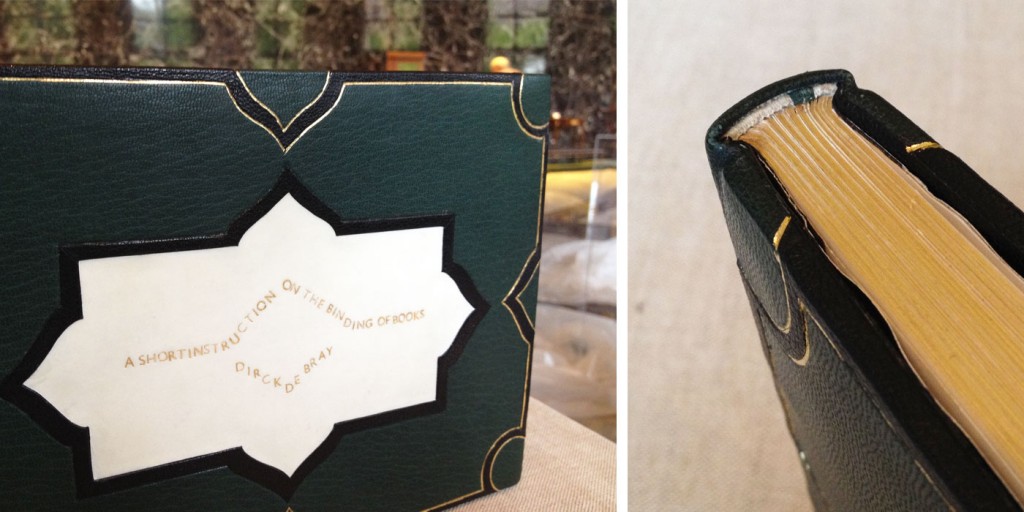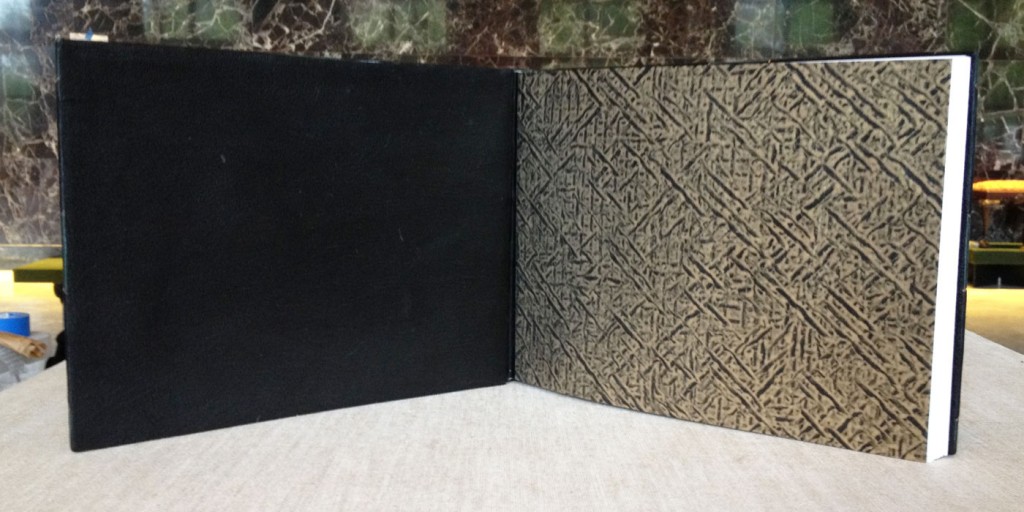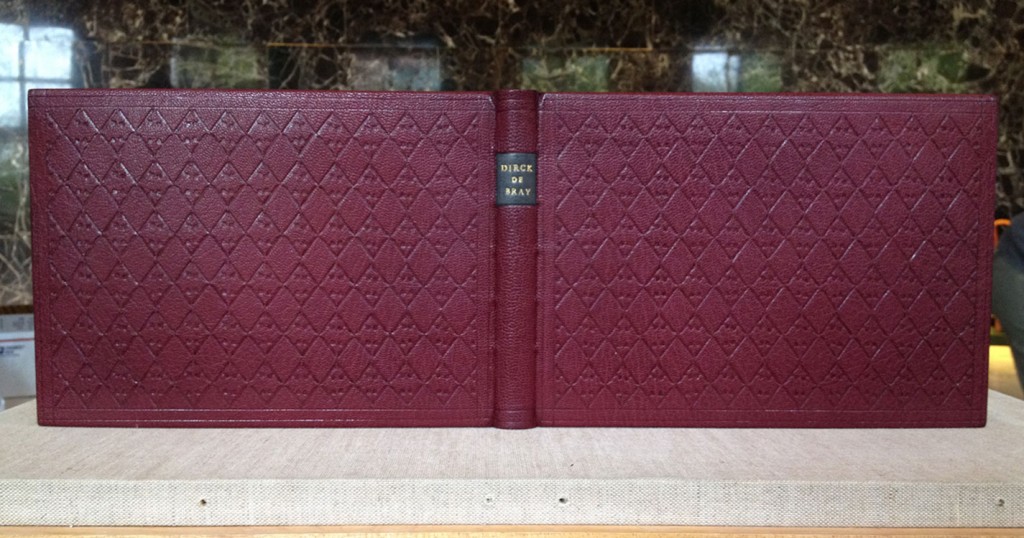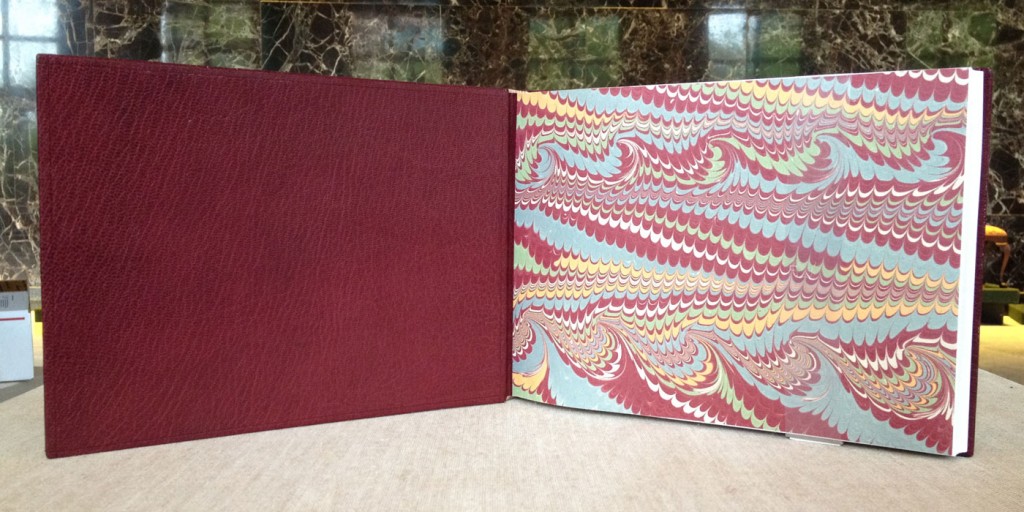The Annual Student and Alumni Show at North Bennet Street School displays work from both current students and alumni. In this post, I will be focusing on some of the outstanding work exhibited by those who have graduated from the full-time program. If you missed my previous post reviewing the Class of 2016’s design bindings of 1984, you can check that out here.
McKey Berkman, BB ’11
When I looked at the headband and endcap on McKey’s binding of Books Will Speak Plain by Julia Miller I was in awe. Each thread is wrapped with perfect tension and her endcaps are formed so evenly creating a beautiful crescent shape. The binding is covered in full green goatskin. The tooled orange onlay is stamped in a matte grey and outlined with a single brown tooled line with small squares at each corner. The head edge is colored with graphite. The details on this binding are subtle, but done with such a high level of craftsmanship.
Marianna Brotherton, BB ’14
This binding from Marianna is spectacular. I love the how the leather onlays pop away from the cover. Marianna’s binding of Euclid’s Elements of Geometry is bound in full green goatskin with suede doublures. The onlays are gilt in the center to highlight a specific shape. The title is tooled in gold down the spine. The edges are sprinkled with green pigment. The headbands are hand sewn with white and green silk. The book is housed in a beautiful 4-flap lined in suede. Each pointed flap wraps around the book to meet at the center. Check out more of Marianna’s work at her website.
Lauren Calcote, BB ’15
Regulars to the blog, know my admiration for embroidered bindings. Lauren’s work has always impressed me and balances between contemporary and traditional. This embroidered binding of Familiar Lectures on Botany is bound on raised cords that are laced through the covers, which are covered in Galaxy Cave Paper. This richly dark handmade paper is filled with flecks of mica offering a subtle dazzle of shimmer. The embroidery is achieved with linen and metallic threads. The center motifs are designed with gold leaf for the sun and a piece of vellum for the moon.
Lauren is also highly skilled with creating miniature bindings of historic models. This mini Girdle Book is sewn over raised cords and laced into cedar boards, which are covered in a crimson goatskin. The covers are blind tooled in a traditional lozenge pattern. There are even miniature brass clasps and a small linen knot to secure the book underneath your teeny, tiny belt.
Samuel Feinstein, BB ‘12
It is so great to see work from a former classmate of mine. Samuel is one of the most talented binders of my generation. Story of the Eye by George Bataille is bound as a Millimeter binding in the Rubow-style. A strip of black goatskin runs across the entire head and tail edge of the book. An exquisite marbled paper (made by Samuel) covers the remainder of the binding. The marbled area is isolated to the spine with threads of color sprawling onto the covers. The head edge of the text block is decorated with gold leaf over graphite. The endpapers are also marbled, but on white paper instead of black. Check out more of Samuel’s work at his website.
Fionnuala Gerrity, BB ’11 and Maryanne Grebenstein
During our time at NBSS, Fionnuala gave a presentation on back-painted vellum; a decorative technique seen on Cosway and stiff-board vellum bindings. It was clear to me that she was hooked by this niche area of bookbinding. Maryanne Grebenstein is a very talented calligrapher and teaches workshops at NBSS. Together they created this lovely rendition of a haiku by Matsuo Basho, a famous poet of the Edo period in Japan.
Barbara Halporn, BB ‘06
There are so many things I love about Barbara’s binding of Webster’s Pictorial Dictionary by John M. Carrera. The leather from Pergamena has been distressed and is absolutely alluring. In these three bindings, Barbara references a historical Coptic binding. She even includes details such as headbands that wrap from cover to cover across the spine and leather toggles to keep the book securely closed. The title is blind tooled across the spine of the largest book. Check out more of Barbara’s work at her website.
Becky Koch, BB ’12
Becky was also classmate of mine and I was so thrilled to see her work in the show. The Rime of the Ancient Mariner by Samuel Taylor Coleridge is bound as a simplified binding with black goatskin for the spine and a deep red buffalo skin for the covers. A surface gilt seagull adorns the front cover. The red buffalo skin is puckered over raised triangles on both covers. The title is tooled in gold down the spine. The buffalo skin offers such a distinct texture, but Becky managed to amplify the skin through her manipulation of the leather. Check out Becky’s website: Dog Eared Bindery.
Lauren Moon-Schott, BB ’13
Lauren is an incredibly talented binder and conservator. She currently holds a position at the Rare Book Room in the Boston Public Library and she is also one of my studio mates. She bound this amazing model of a Stationer’s Binding over Julia Miller’s Books Will Speak Plain. The covers are goatskin with toggles and ties in alum-tawed pigskin. The complexity of the binding is not to be under-rated. Each cross-tie has to be meticulously laced through the covers.
Wendy Withrow, BB ‘08
I met Wendy for the first time at the Standards of Excellence Conference last year in Cleveland, Ohio. I was so excited to meet her, not only is her work well executed and her craftsmanship clean, she was one of the few alumni that I reached out to when applying to NBSS. Her words were so encouraging and her work inspiring. As the only artist book in the show, Nine Months to Bear Fruit, is quite attractive. Each object is sculpted from clay and held shut with magnets. The exterior is painted with acrylic. Hidden inside each piece is a miniature accordion, which you can read by clicking here.
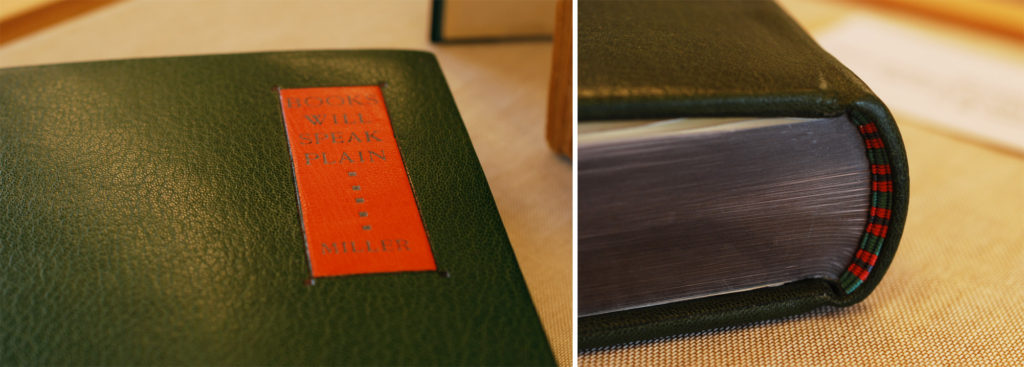
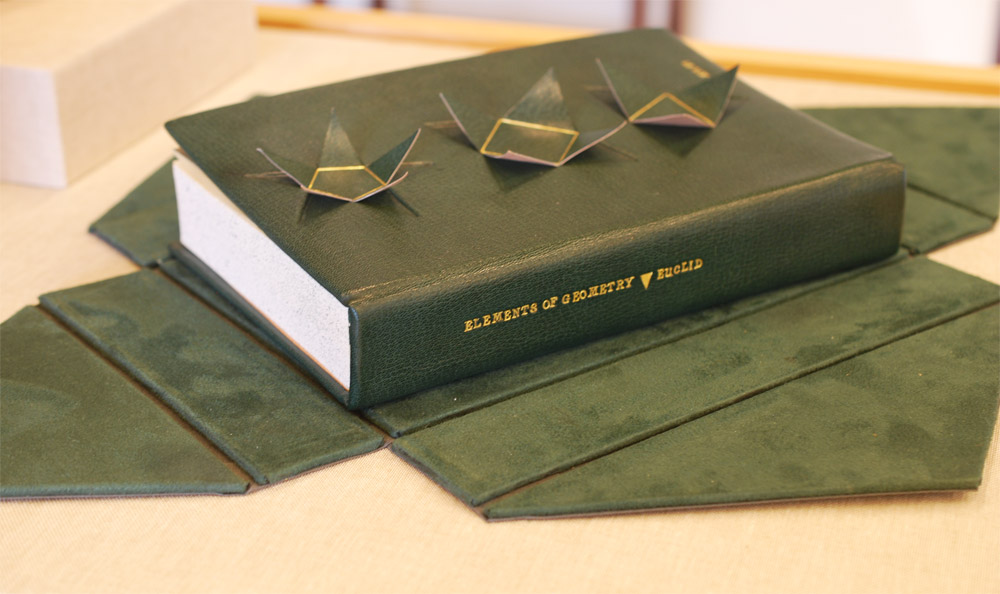
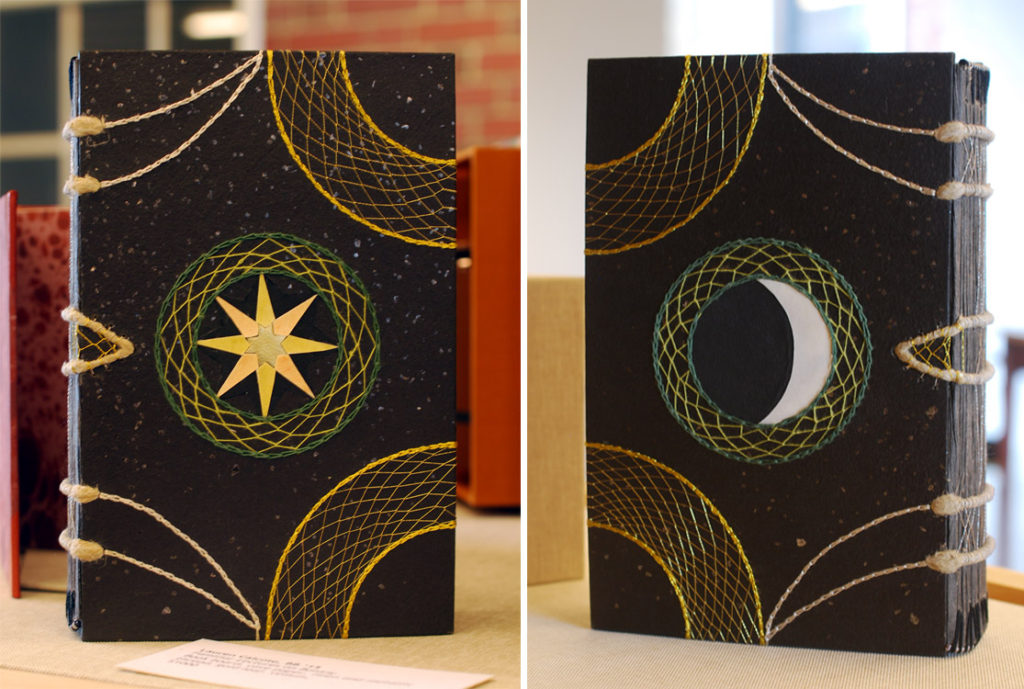
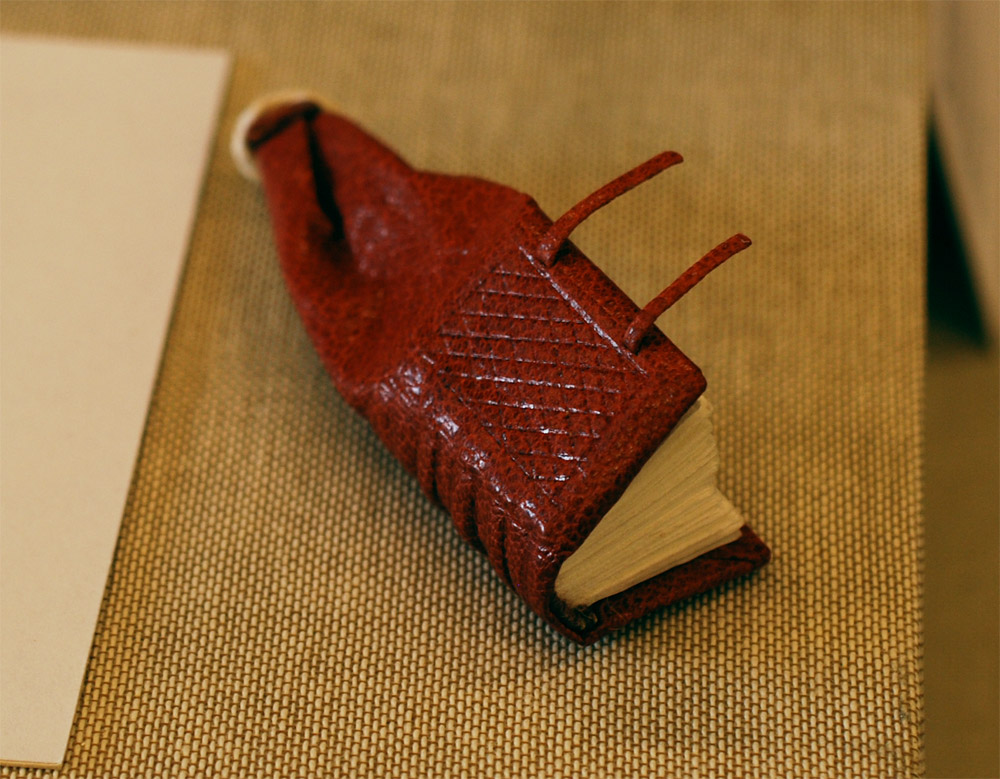
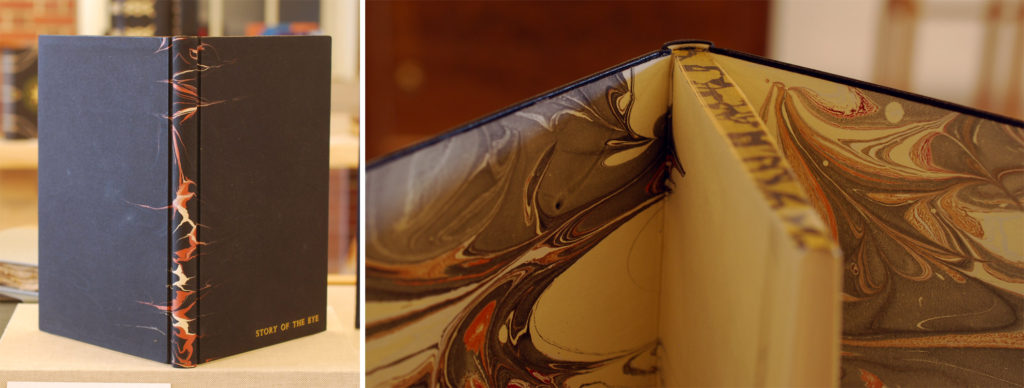
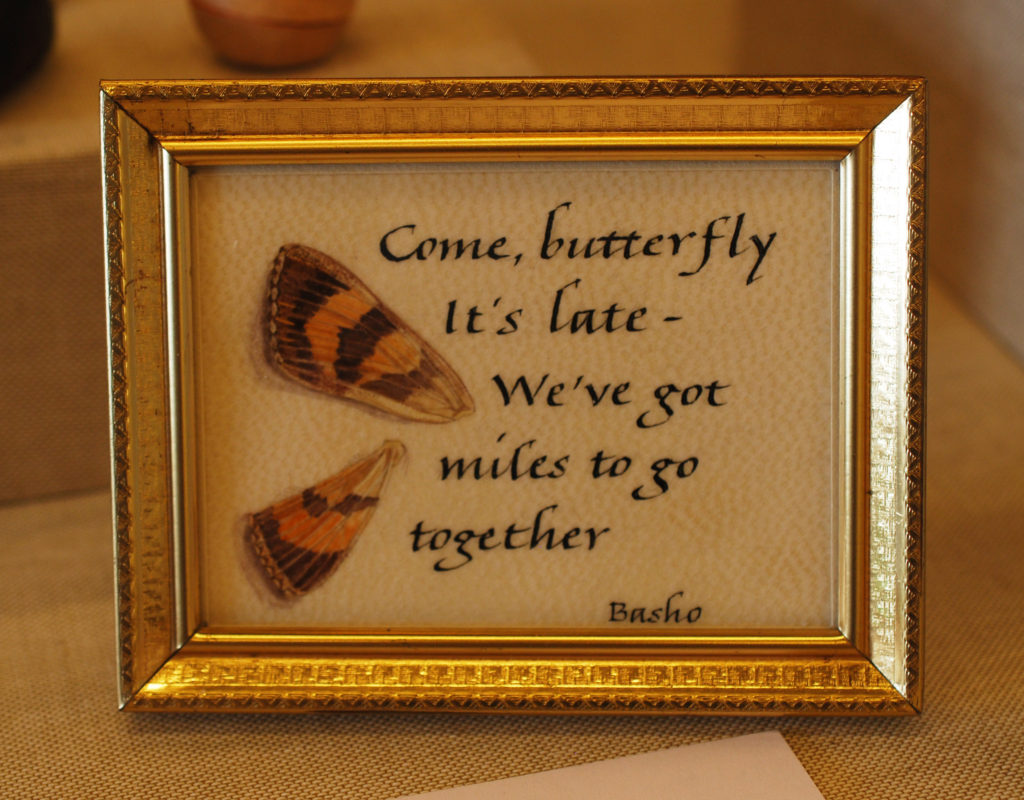
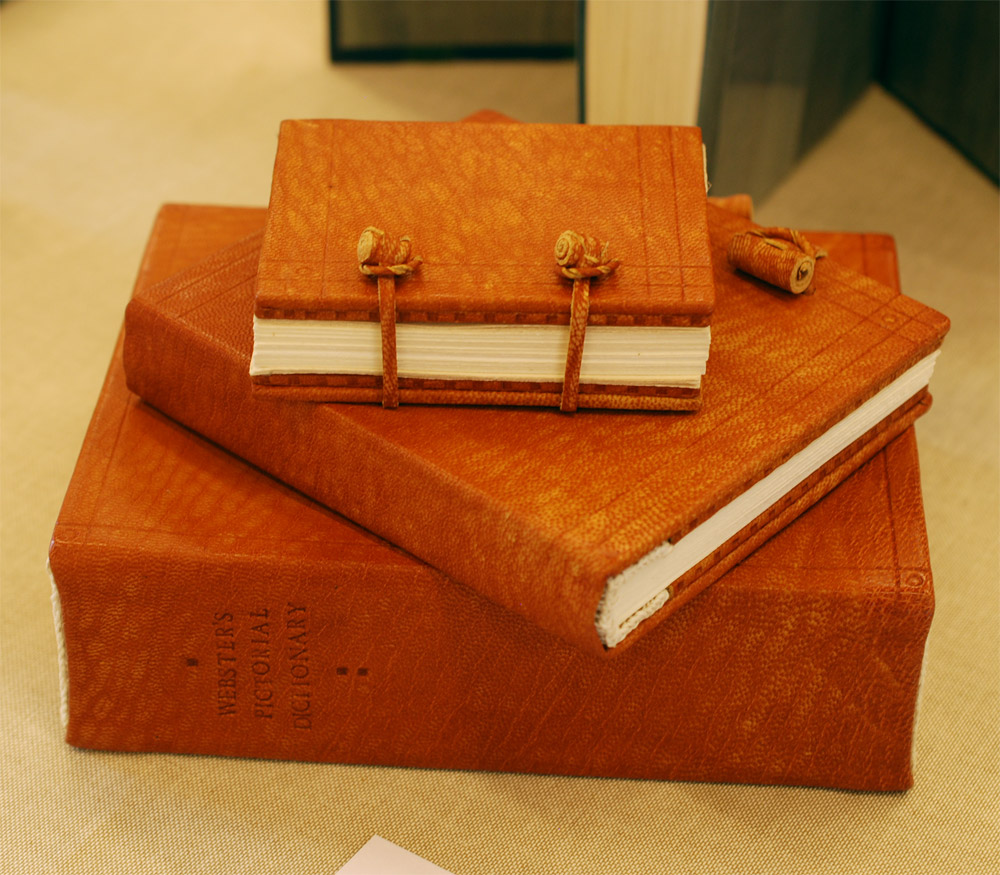
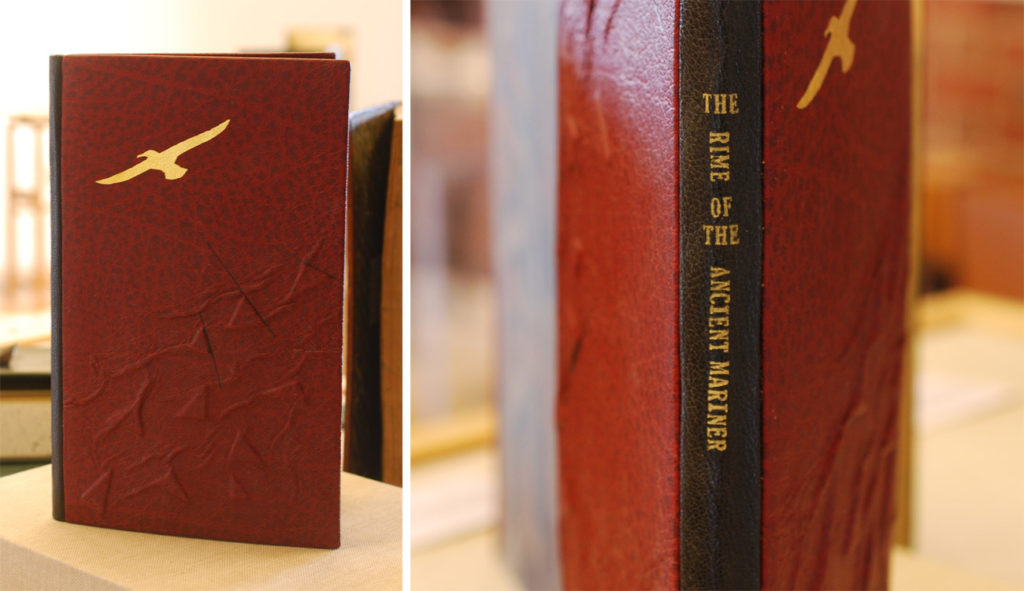
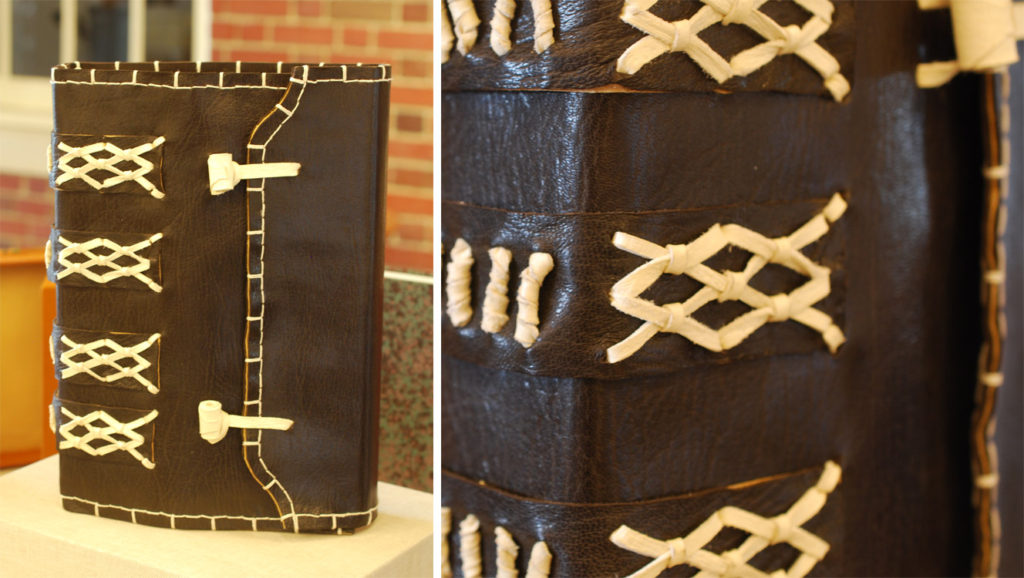
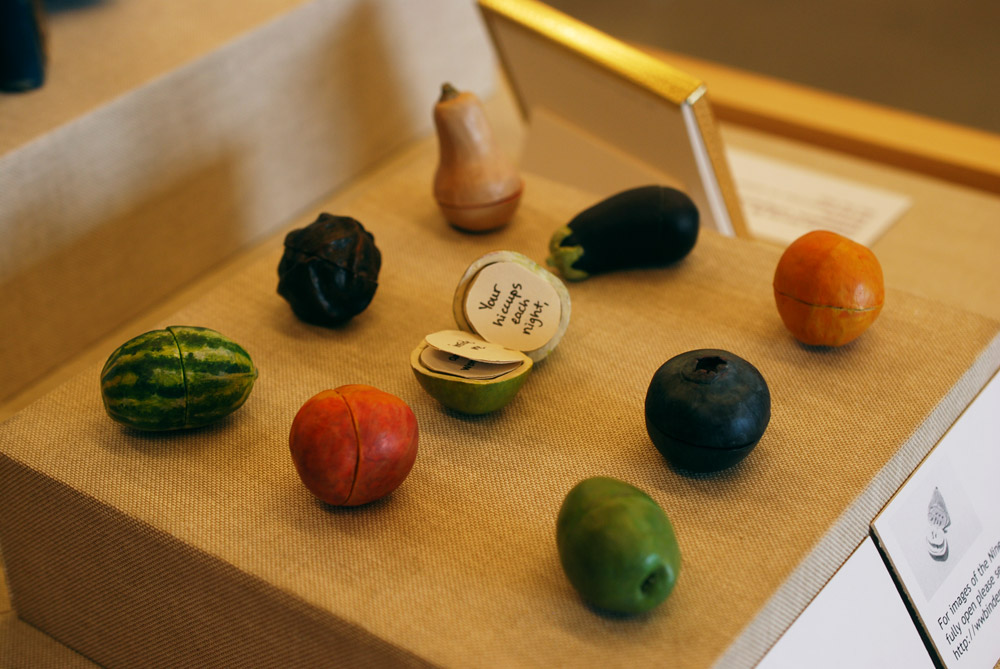
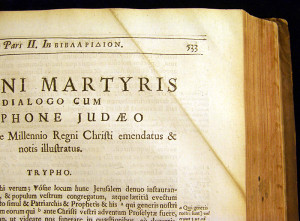
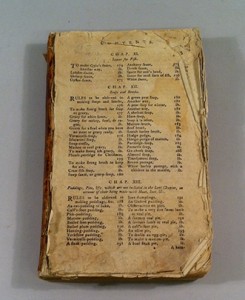
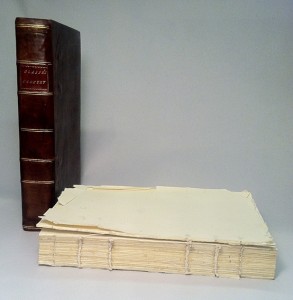
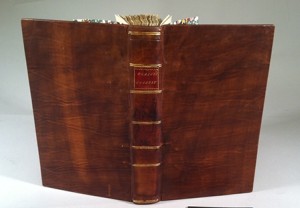
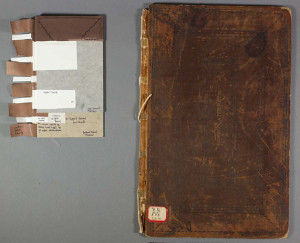
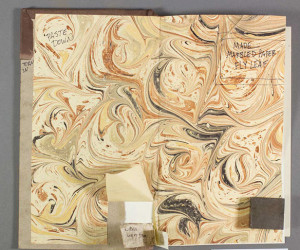
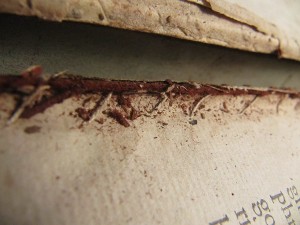
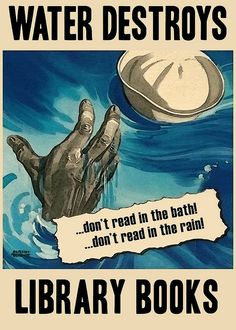
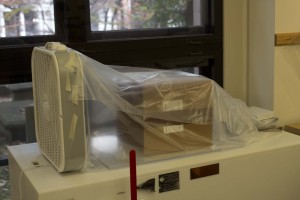
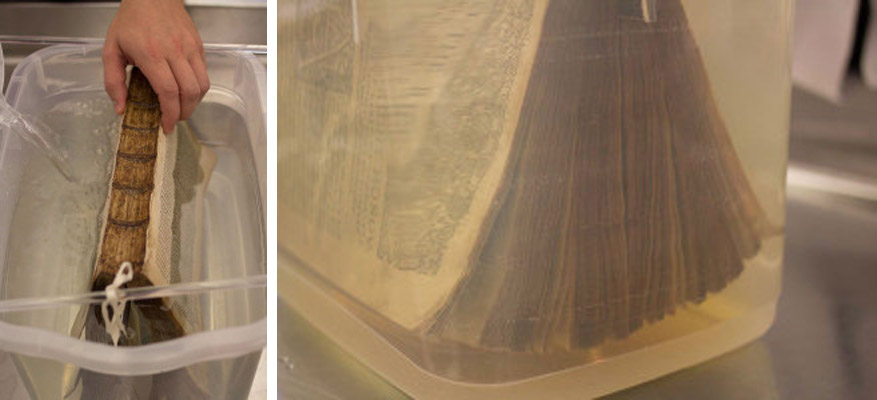
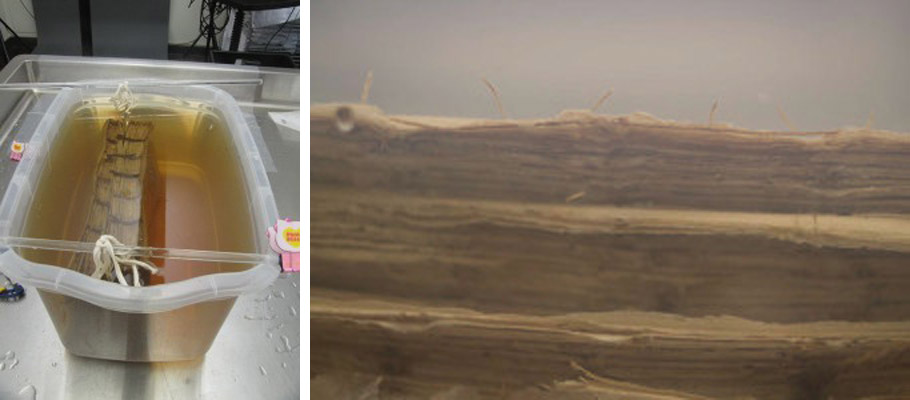
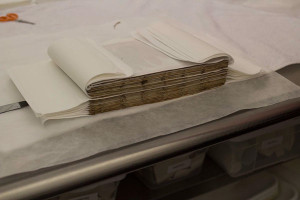 We were all curious to see how the book would dry, and how the paper would respond to a week long stint in the Motel 8 of wind tunnels. Continuing in this manner gave me time to consider and investigate the methods of washing, drying, and flattening that I had learned. And although it turns out that washing and drying intact is not actually faster, it is still just one more possibility.
We were all curious to see how the book would dry, and how the paper would respond to a week long stint in the Motel 8 of wind tunnels. Continuing in this manner gave me time to consider and investigate the methods of washing, drying, and flattening that I had learned. And although it turns out that washing and drying intact is not actually faster, it is still just one more possibility.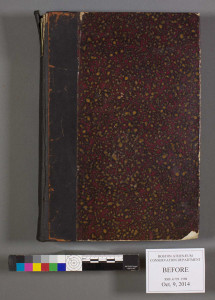
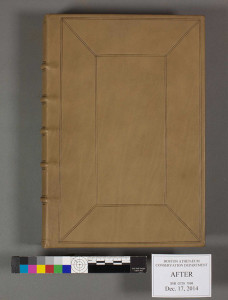
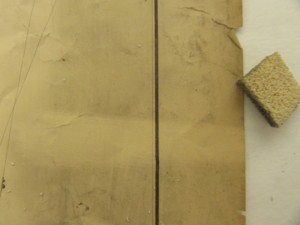 s, rubber eraser crumbs, cosmetic sponges, brushes… The list of implements goes on, but the concept remains singular. REMOVE LOOSE SURFACE DIRT. As you can see, one swipe of the sponge quickly leads to a hefty pile of spent latex, and one impressive jar of hair, dirt, dust, and many other unmentionables. [note: photographs are examples of three distinct pieces, and are adjacent for effect only.]
s, rubber eraser crumbs, cosmetic sponges, brushes… The list of implements goes on, but the concept remains singular. REMOVE LOOSE SURFACE DIRT. As you can see, one swipe of the sponge quickly leads to a hefty pile of spent latex, and one impressive jar of hair, dirt, dust, and many other unmentionables. [note: photographs are examples of three distinct pieces, and are adjacent for effect only.]
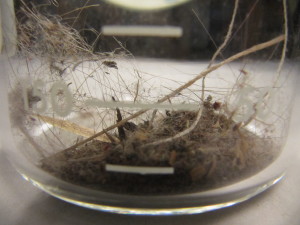
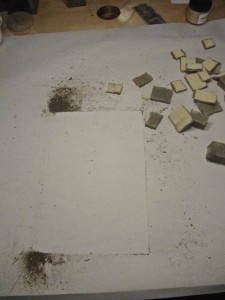
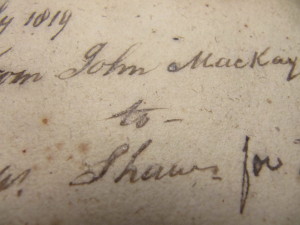 period of roughly 24 hours, the cyclododecane will sublime off the paper, leaving behind only the unaffected, unwashed ink. Then after washing, one is able to flatten and dry the paper between felts and weight. This particular fly-leaf not only lost any wrinkles or creases it previously had, but it brightened in color, added a degree of softness, and regained a sense of drape as well.
period of roughly 24 hours, the cyclododecane will sublime off the paper, leaving behind only the unaffected, unwashed ink. Then after washing, one is able to flatten and dry the paper between felts and weight. This particular fly-leaf not only lost any wrinkles or creases it previously had, but it brightened in color, added a degree of softness, and regained a sense of drape as well.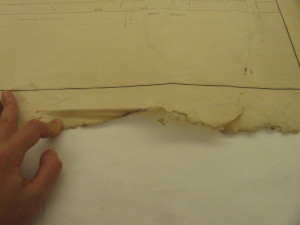 of a blotter-reemay-weight sandwich, you will find the fold to have flattened out. I find wheat starch paste to be preferable to water because there is a bit of added control in the spread of moisture, and the paste adds just a dash of strength to the weakened area. [Note: tide-lines, and other horrible and unimaginable affects could be consequence to this treatment. ALWAYS spot test before introducing moisture into paper.]
of a blotter-reemay-weight sandwich, you will find the fold to have flattened out. I find wheat starch paste to be preferable to water because there is a bit of added control in the spread of moisture, and the paste adds just a dash of strength to the weakened area. [Note: tide-lines, and other horrible and unimaginable affects could be consequence to this treatment. ALWAYS spot test before introducing moisture into paper.]
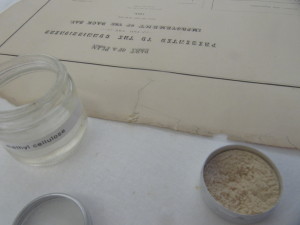
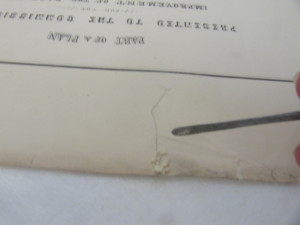 you’ll have yourself an array of creams, whites and browns. This powder, being of the same “stuff” as your paper, will blend nicely when affixed with a small amount of paste or methyl cellulose. Sometimes, simply rubbing the fine powder across the mend is enough to discourage the eye from seeing the tear immediately.
you’ll have yourself an array of creams, whites and browns. This powder, being of the same “stuff” as your paper, will blend nicely when affixed with a small amount of paste or methyl cellulose. Sometimes, simply rubbing the fine powder across the mend is enough to discourage the eye from seeing the tear immediately.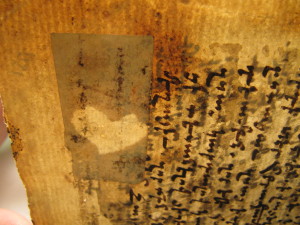
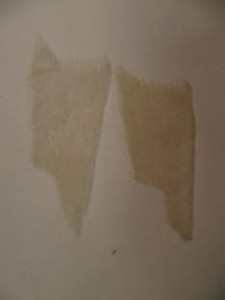
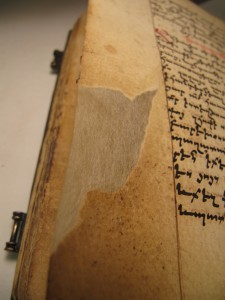 quickly, and only a little bit of weight is necessary. I like to turn the paper over, and add a second layer of the same tissue, overlapping the first mend every so slightly from the verso side. Here, it is good to paste up the entire piece, so that it sticks both to the paper being mended, and the first layer of tissue. A mixture of types of tissues and weights can and should be used to match the mend, the kind of paper being mended, taking into account the condition the original paper is in. Each repair is unique, and requires an arsenal of paste thicknesses (thin paste is more flexible than thick paste, but thick paste can be tackier) and different tissue types.
quickly, and only a little bit of weight is necessary. I like to turn the paper over, and add a second layer of the same tissue, overlapping the first mend every so slightly from the verso side. Here, it is good to paste up the entire piece, so that it sticks both to the paper being mended, and the first layer of tissue. A mixture of types of tissues and weights can and should be used to match the mend, the kind of paper being mended, taking into account the condition the original paper is in. Each repair is unique, and requires an arsenal of paste thicknesses (thin paste is more flexible than thick paste, but thick paste can be tackier) and different tissue types.